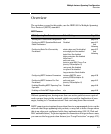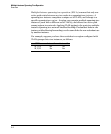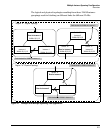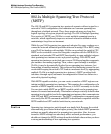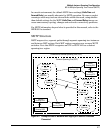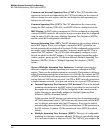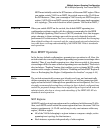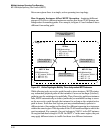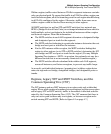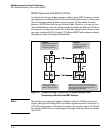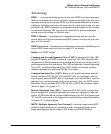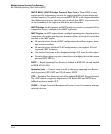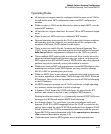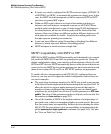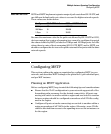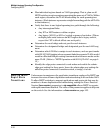
Multiple Instance Spanning-Tree Operation
802.1s Multiple Spanning Tree Protocol (MSTP)
Within a region, traffic routed between VLANs in separate instances can take
only one physical path. To ensure that traffic in all VLANs within a region can
travel between regions, all of the boundary ports for each region should belong
to all VLANs configured in the region. Otherwise, traffic from some areas
within a region could be blocked from moving to other regions.
All MSTP switches (as well as STP and RSTP switches) in a network use
BPDUs (Bridge Protocol Data Units) to exchange information from which to
build multiple, active topologies in the individual instances within a region
and between regions. From this information:
■ The MSTP switches in each LAN segment determine a designated bridge
and designated port or trunk for the segment.
■ The MSTP switches belonging to a particular instance determine the root
bridge and root port or trunk for the instance.
■ For the IST instance within a region, the MSTP switches linking that
region to other regions (or to STP or RSTP switches) determine the IST
root bridge and IST root port or trunk for the region. (For any Multiple
Spanning-Tree instance—MSTI—in a region, the regional root may be a
different switch that is not necessarily connected to another region.)
■ The MSTP switches block redundant links within each LAN segment,
across all instances, and between regions, to prevent any traffic loops.
As a result, each individual instance (spanning tree) within a region deter-
mines its regional root bridge, designated bridges, and designated ports or
trunks.
Regions, Legacy STP and RSTP Switches, and the
Common Spanning Tree (CST)
The IST instance and any MST instances in a region exist only within that
region. Where a link crosses a boundary between regions (or between a region
and a legacy STP or RSTP switch), traffic is forwarded or blocked as deter-
mined by the Common Spanning Tree (CST). The CST ensures that there is
only one active path between any two regions, or between a region and a
switch running STP and RSTP. (Refer to figure 4-2 on page 4-7.)
4-11



